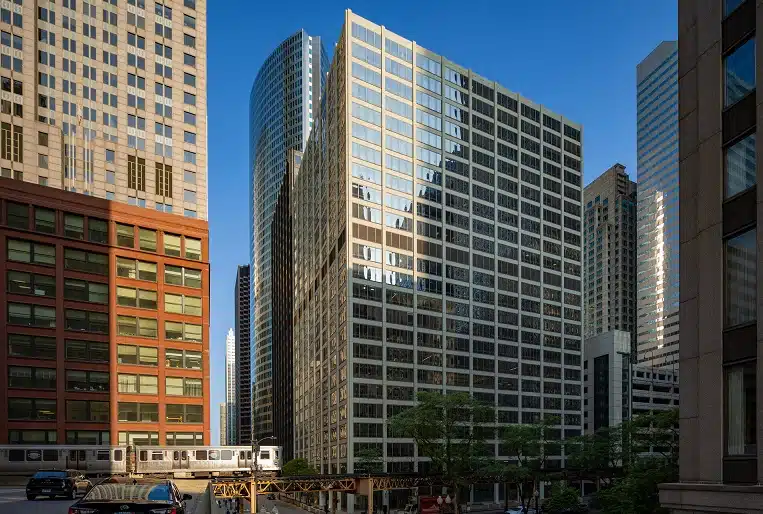The Foreclosure Future of Office Spaces and Commercial Real Estate Markets
The recent foreclosure filing by Deutsche Bank against Accesso Partners for the 200 West Monroe Street property in Chicago’s Loop is emblematic of a broader crisis impacting office spaces and commercial real estate markets nationwide. This event not only highlights the financial distress within the sector but also signals potential shifts in the utilization and valuation of office properties.
The Foreclosure Context
Accesso Partners, a Florida-based real estate firm, acquired the 23-story, 650,000-square-foot building at 200 West Monroe in 2014 for $100 million, financing the purchase with a $75 million loan. As the loan matured in June 2024, Accesso failed to repay the debt, leading Deutsche Bank, representing CMBS bondholders, to initiate foreclosure proceedings. Prior to this, the loan had been in special servicing due to delinquent payments since late 2023.
This foreclosure is not an isolated incident for Accesso in the Chicago area. Earlier in 2024, the firm defaulted on $91 million in loans for properties in The Loop and Naperville. Additionally, Accesso sold the neighboring 230 West Monroe building at a significant loss, fetching nearly $45 million compared to its 2014 purchase price of $122 million.

Broader Trends in Office Space Distress
The challenges faced by Accesso reflect a nationwide trend of increasing distress in the office sector. High interest rates and weakened demand have led to unprecedented levels of defaults and foreclosures. Data from MSCI indicates that over $38 billion worth of office buildings are currently in financial distress, the highest amount since late 2012.
The COVID-19 pandemic accelerated the adoption of remote work, reducing the demand for traditional office spaces. This shift has left many office buildings underutilized, leading to higher vacancy rates and declining property values. Consequently, landlords are struggling to meet debt obligations, especially those with loans maturing in the current high-interest-rate environment.
Implications for Office Spaces
The financial strain on office properties is prompting a reevaluation of their use. One emerging trend is the conversion of unoccupied office buildings into residential spaces. In 2024, there have been 73 completed conversion projects, with 309 more planned or underway, predominantly focusing on office-to-residential transformations. This approach is particularly prevalent in cities like New York, Chicago, and Washington, D.C., and is seen as a strategy to revitalize downtown areas affected by low office occupancy rates.
However, these conversions come with challenges, including the need to relocate existing tenants and ensure that the architectural design of former office buildings can accommodate residential requirements, such as adequate light and air. Despite these hurdles, developers are increasingly pursuing such projects, often with the support of government incentives like subsidies and tax breaks.
Impact on Commercial Real Estate Markets
The surge in office property foreclosures is exerting downward pressure on commercial real estate markets. As distressed properties enter the market, they contribute to an oversupply, leading to declining property values. This trend is particularly pronounced in urban centers like Chicago, where the downtown area is experiencing a real estate crisis marked by high vacancy rates and businesses relocating due to factors such as crime and tax rates.
Financial institutions are also feeling the impact. The increase in distressed assets affects lenders’ balance sheets, leading to more conservative lending practices. This tightening of credit can hinder new commercial real estate projects and slow down market recovery.
Future Outlook
The current landscape suggests that the commercial real estate market, particularly the office sector, may continue to face challenges in the near term. The combination of evolving work patterns, economic uncertainties, and financial pressures necessitates innovative approaches to property utilization and management.
Adaptive reuse of office spaces, such as conversions to residential units, offers a potential pathway to mitigate some of the negative impacts. However, successful implementation will require collaboration among developers, policymakers, and communities to address the inherent challenges and ensure that such transformations meet market demands and contribute positively to urban environments.
In conclusion, the foreclosure of 200 West Monroe Street serves as a microcosm of the broader issues confronting the office space and commercial real estate markets. Addressing these challenges will require strategic adaptations and a willingness to rethink traditional models of property use and investment.

